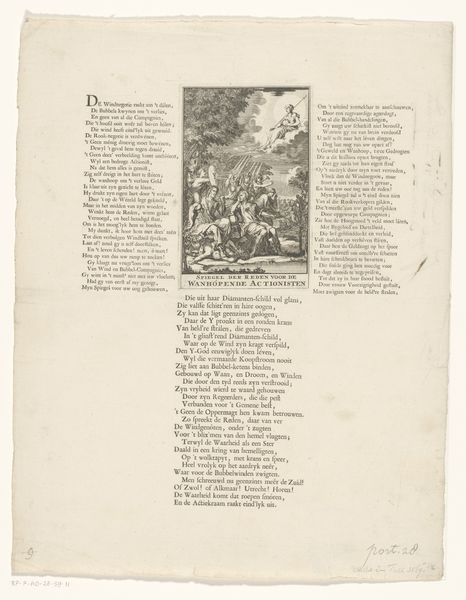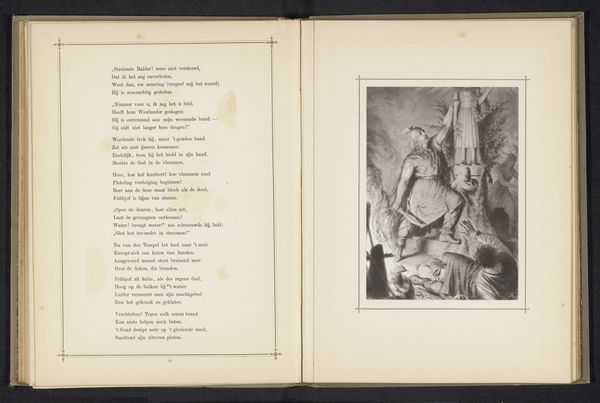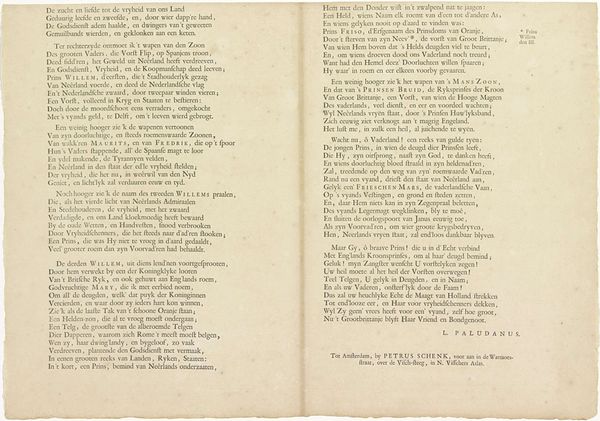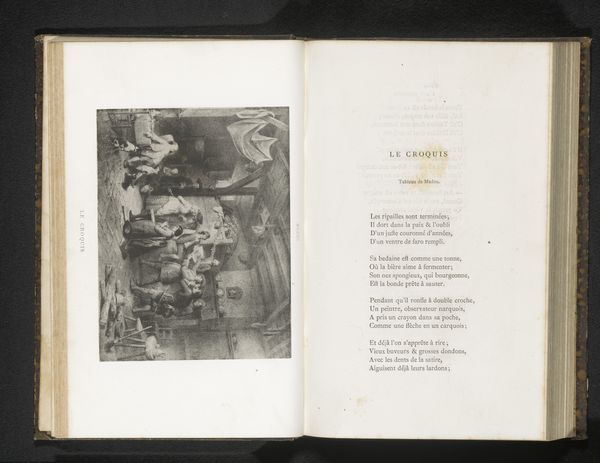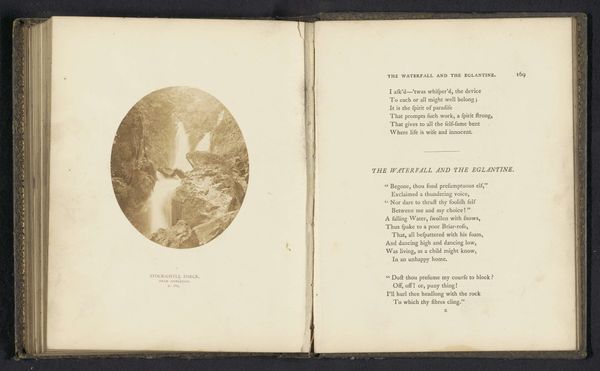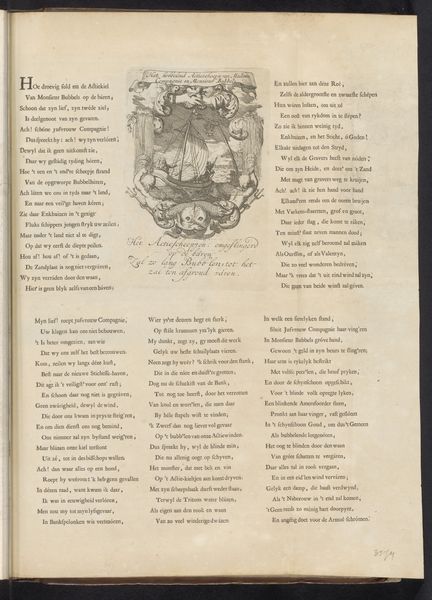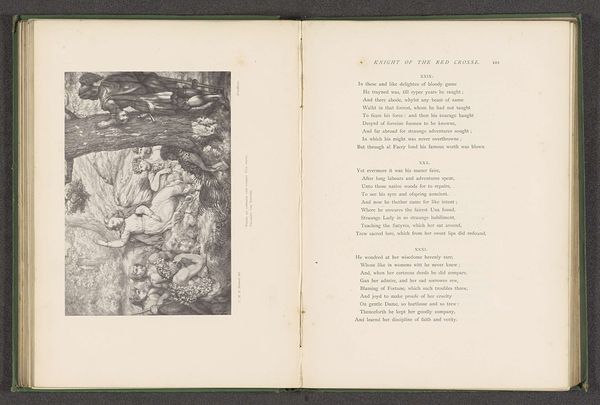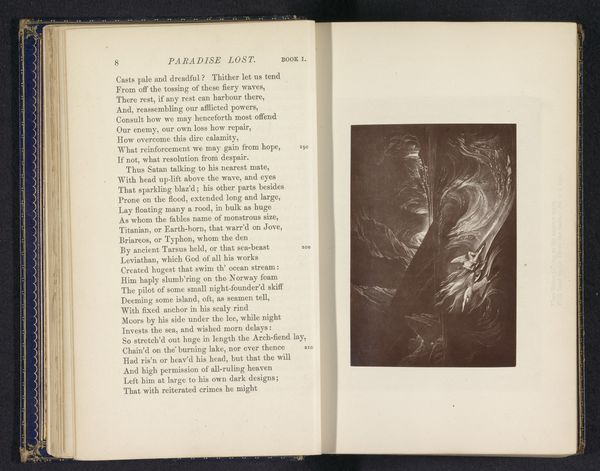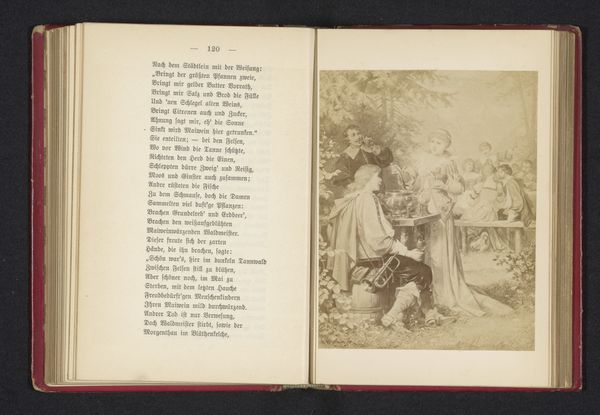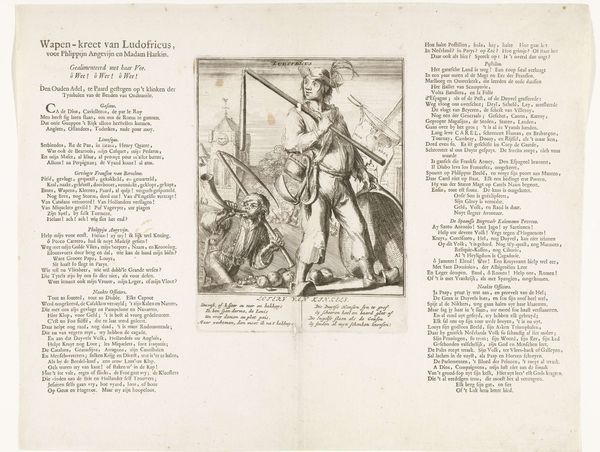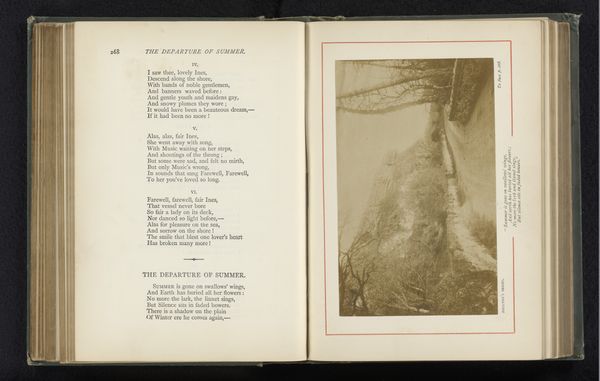
drawing, print, etching, paper, engraving
#
drawing
#
baroque
# print
#
etching
#
paper
#
history-painting
#
engraving
Dimensions: height 420 mm, width 303 mm
Copyright: Rijks Museum: Open Domain
Curator: We're looking at a piece called "Spiegel der Reden voor de wanhopende Actionist, 1720," or "Mirror of Reason for the Despairing Stock Jobber, 1720". Jacobus Schijnvoet is credited as the creator of this engraving, etching, and print. Editor: It's so detailed! There’s so much happening, I don’t know where to look. I get a sense of chaos mixed with aspiration, like people are reaching for something that’s just beyond their grasp. What strikes you first about this artwork? Curator: Well, considering the period, I immediately think about the South Sea Bubble and the Mississippi Company bubble. It's very likely a satirical piece commenting on that moment. We see figures weighed down, perhaps by their failed investments, while another figure ascends to the heavens—or maybe, a figure who's hanging by a thread. Editor: The image is a perfect metaphor for the anxieties of the time. A few figures are literally weighed down with material, representing either wealth or the instruments for financial dealing. Others reach, nearly climb each other, seeking release in the sky. Given your understanding of history, who or what would you argue are these players here, besides investors? Curator: Given the political climate in the Dutch Republic during the early 18th century, this engraving most likely points at complex networks of global trade, mercantile capitalism, and colonialism. Those bubbles triggered social upheaval, revealing fault lines of inequality and colonial exploitation. Editor: Absolutely. Reason, symbolized in the engraving, would seem to be acting to condemn those caught up in bubbles and financial desire. How much access did ordinary citizens have to financial information or, dare I say, reasonable counsel? Perhaps more importantly, who decided what constituted “reason”? What does it say about access, class, and control during this period? Curator: That's a compelling question! Certainly, access to information was unequal. But more generally I’m fascinated by how anxieties about economics are manifested in visual culture. What strategies were employed? Did this art become popular? Editor: These visual responses acted as powerful tools for critiquing systemic injustices, raising awareness, and mobilizing resistance. That's one reason why history and art need to exist in constant dialogue, each always re-examining the other. Curator: I agree. This reminds us of how economic folly, class, and even power never truly vanish, only shape-shift over time, while art bears witness to these metamorphoses.
Comments
No comments
Be the first to comment and join the conversation on the ultimate creative platform.
